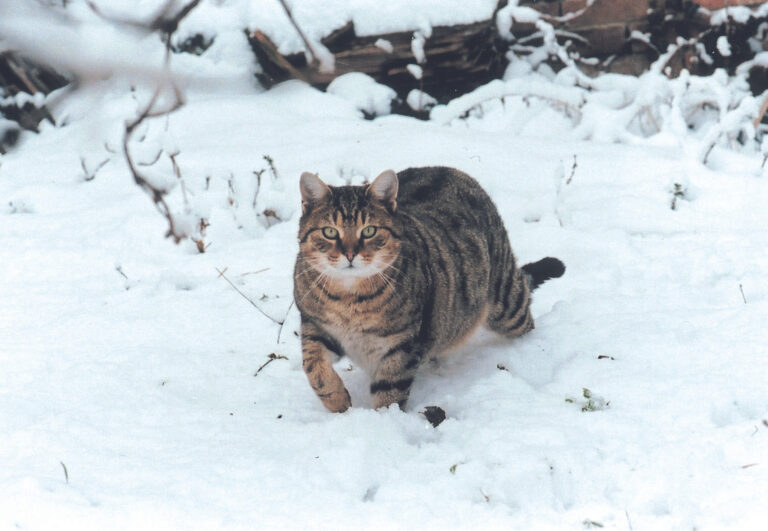As temperatures drop, it’s crucial to ensure outdoor felines are safe and warm. With a few thoughtful strategies, you can create a cozy haven for your whiskered friends. Ever wondered what it’s like for a cat braving the chill? Imagine the surprise of a warm nook amidst the winter’s explosion of cold – that’s what we’re aiming for!
Firstly, let’s talk shelter. Cats are resourceful creatures, but during winter, they need a little help. A sturdy shelter insulated with straw—not hay—can be a lifesaver. Straw repels moisture, while hay can get damp and icy. And hey, why not get creative? An old cooler or a storage bin with a cutout for an entrance can be transformed into a cat condo. Just make sure it’s elevated off the ground to prevent moisture seepage.
Now, onto the menu. In winter, cats need more calories to stay warm. So, pump up the protein and always keep the water from turning into an ice rink. A heated water bowl can do wonders. And remember, regular health check-ups are non-negotiable. Keep an eye out for signs of frostbite and hypothermia. If you’re in doubt or see any worrisome signs, it’s time to seek emergency care. With these tips, you’ll not only provide warmth but also peace of mind, knowing you’ve given your outdoor pals the best shot at a cozy winter.
Understanding the Risks of Cold Weather
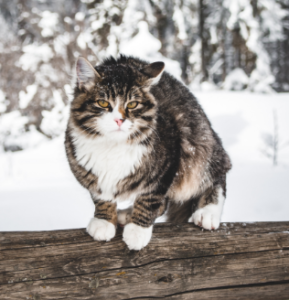
So, what can you do to mitigate these risks? Understanding the dangers is the first step. Cats are incredibly resilient, but they’re not invincible. Providing a warm shelter, ensuring regular food and water supplies, and keeping an eye out for any signs of distress are all part of being a responsible caretaker for our outdoor feline friends. Remember, they rely on us to make it through the chill of winter!
Shelter Solutions for Outdoor Cats
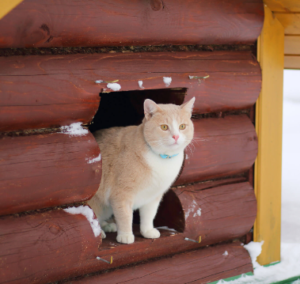
Now, let’s talk specifics:
- Size matters: A snug fit is key. Too large and the body heat vanishes like a ghost.
- Elevation: Off the ground, folks! It keeps the chill out and the warmth in.
- Entrance: One door policy here. Multiple entries? That’s just an open invitation for the cold to waltz in.
- Weatherproofing: Seal the deal with waterproof materials. We’re building a shelter, not a swimming pool.
And don’t forget, a little bit of love goes a long way. A dash of catnip or a familiar blanket can make a world of difference. So, let’s roll up those sleeves and give our whiskered companions the warmth they deserve!
Feeding and Hydration Essentials
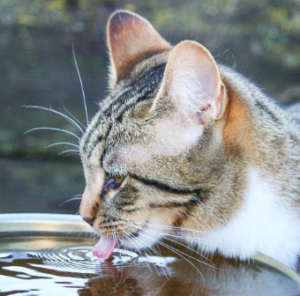
Firstly, upping the calories is a must – outdoor cats burn more energy to stay warm. Think of it like fueling a furnace; the colder it gets, the more fuel it needs. So, what’s on the menu? High-quality wet food can give them that extra energy boost, plus it’s a sneaky way to increase their water intake. But, remember to serve it in insulated bowls to prevent a cat’s version of an ice lolly.
Speaking of ice, water turning into an icy slip ‘n slide is a no-go. Thermal bowls or even a simple Styrofoam box can prevent a cat’s tongue from sticking to the bowl – talk about a winter faux paw! And hey, if you’re feeling fancy, a heated water dish could be the purr-fect splurge.
Here’s a quick checklist to ensure you’re on top of the feeding game:
- Switch to wet food or mix it with dry kibble.
- Increase meal portions, especially during extreme cold.
- Use insulated or heated dishes to prevent freezing.
- Keep the feeding area sheltered from the elements.
- Check water bowls regularly to keep them ice-free.
Remember, a little extra care can go a long way. So, let’s keep our outdoor companions well-fed and hydrated – because a warm cat is a happy cat, and a happy cat is, well, everything!
Health Check-Ups and Emergency Care
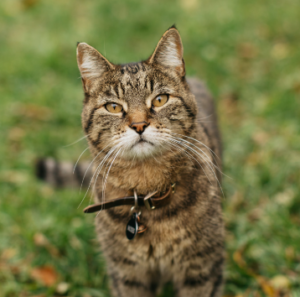
What if you encounter an emergency? It’s vital to have a plan in place. Here’s a quick checklist to ensure you’re prepared:
- Keep the contact details of the nearest vet or animal hospital handy.
- Have a first-aid kit ready with essentials like blankets and warm water bottles.
- Learn the basics of cat first-aid—it could be a lifesaver.
Remember, acting swiftly and calmly can make all the difference. And don’t forget, regular vet visits can keep those purring pals in tip-top shape throughout the chilly season!
